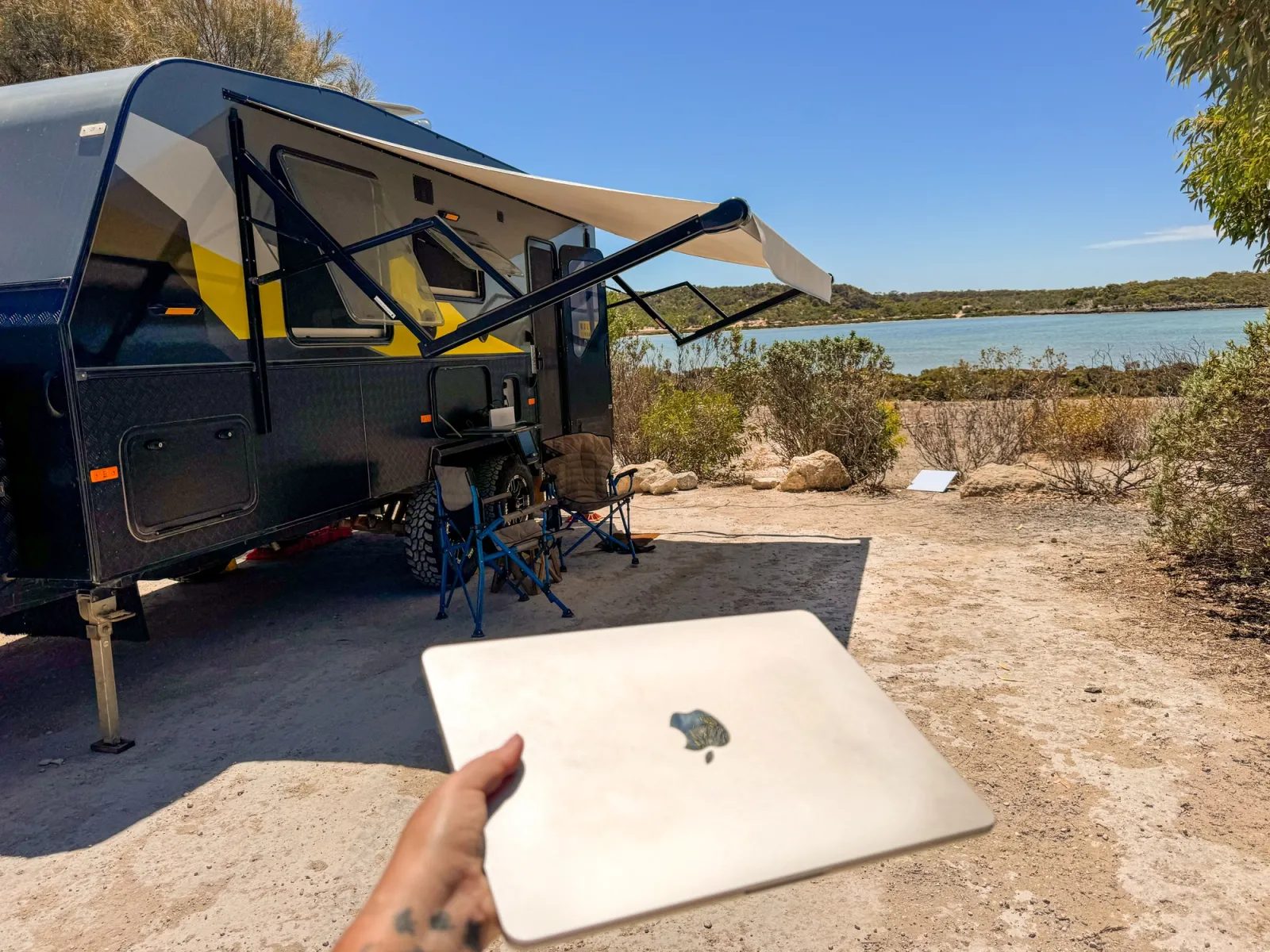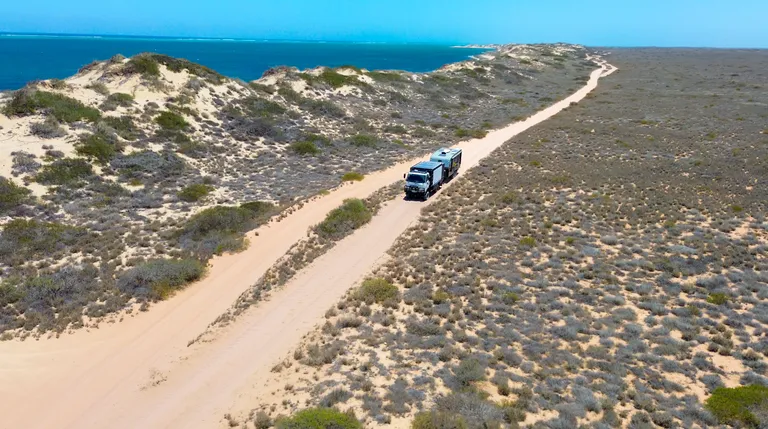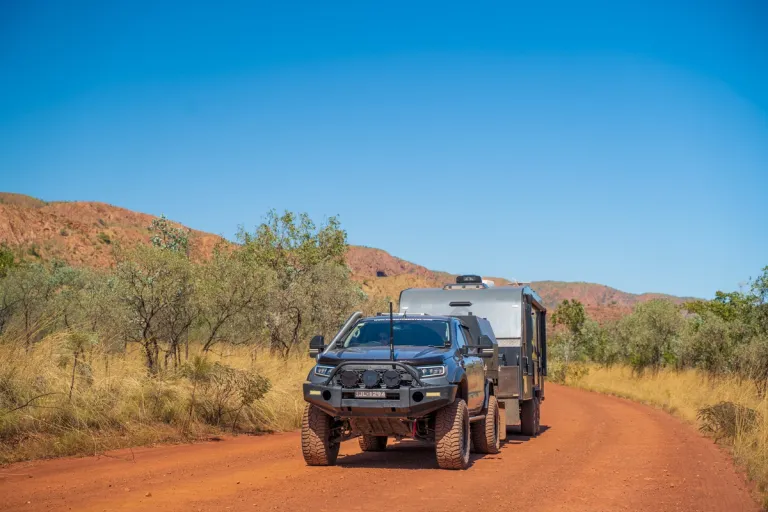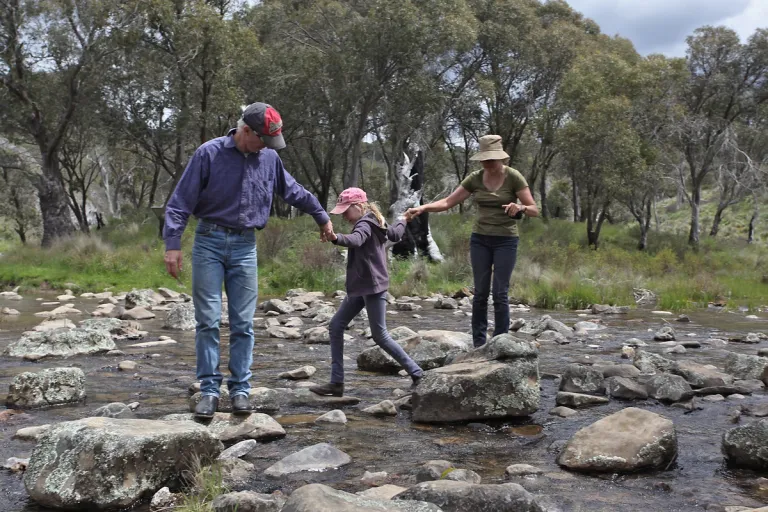Gone are the days when you had to wait until retirement to jump in your 4X4 and travel around Australia. Since the COVID-19 lockdowns, the idea of a ‘normal workplace’ has changed dramatically. At first, working remotely felt strange and unfamiliar for many who were used to the daily commute and 9–5 office life. But by the time 2021 rolled around, remote work had become the new norm for many industries, with businesses embracing either a hybrid model or fully remote teams.
There are benefits for both employers and employees when it comes to remote work—but that’s not what we’re here to talk about. Instead, as a working digital nomad, I want to share my guide to working remotely while you travel Australia, so you can enjoy the best of both worlds: adventure and employment.
1. Establish a reliable internet connection
Depending on your service provider, you might not get reception everywhere in Australia - especially in remote regions. Many travellers recommend signing up with the Telstra Mobile Network since it offers the widest coverage, but there are still plenty of places where you’ll have zero bars. Not exactly ideal for work meetings or tasks that need an internet connection.
You could try using public Wi-Fi at a local library or an internet café, but that’s not my favourite option. It’s hit-and-miss, not always available, and, most importantly, I can’t set up my workspace in the comfort of my own caravan. Let’s be honest - sometimes we start work in our pyjamas!
Personally, I fork out the money for Starlink Satellite internet each month. It uses satellites to provide high-speed internet, but keep in mind it needs a power source, and its power usage can fluctuate depending on temperature, location, and how much you’re using it. It’s not cheap, but in my opinion, the cost is worth it for the incredible technology and the flexibility it gives you to work from anywhere!
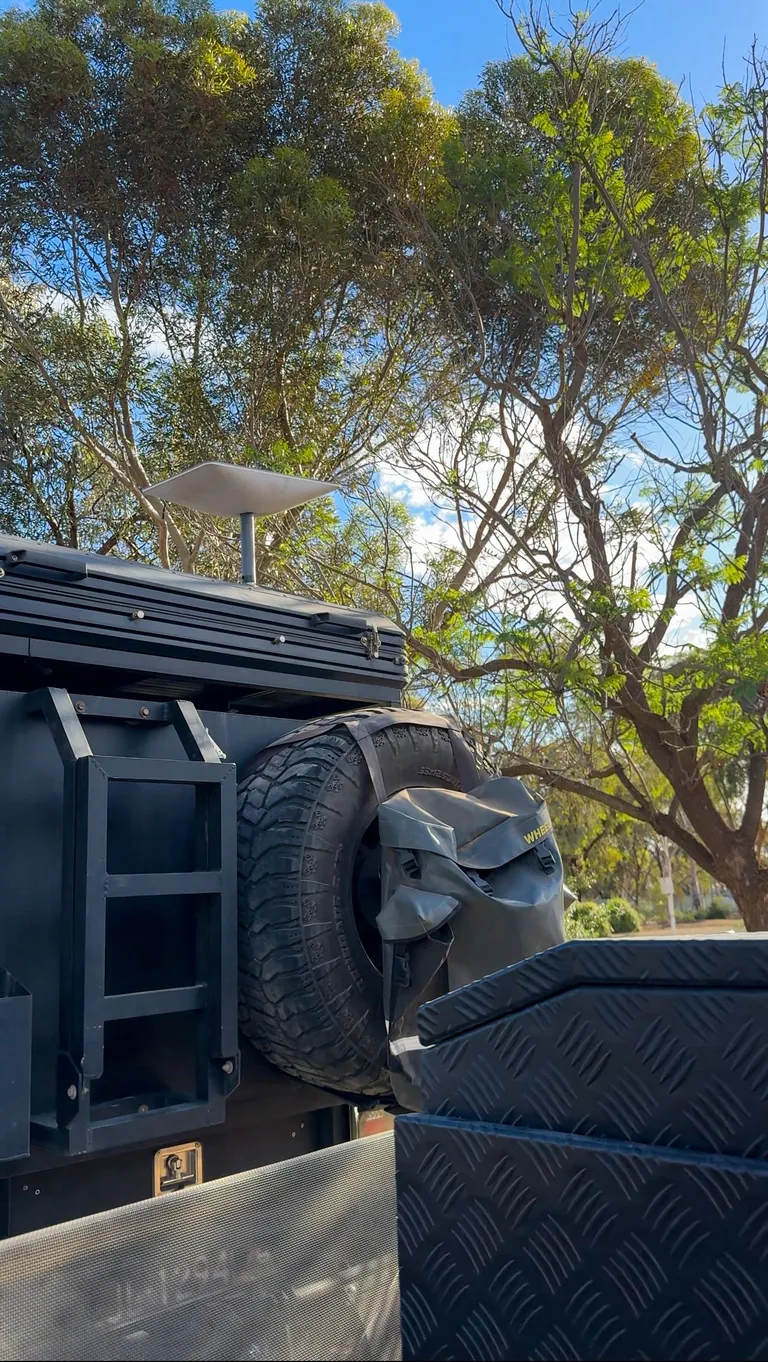
starlink satelitte internet for remote travel around australia
2. Consider your device’s charging needs
Obviously, during your working week, you’ll be using laptops, phones, and other devices to get things done, so it’s worth thinking about how you’ll keep them charged. Luckily, our caravan has an inverter, so I can plug my laptop in and charge it as normal. However, if we get bad weather and the solar panels can’t generate enough power, I risk draining the van’s battery. From experience, I can tell you - you only make that mistake once!
Consider investing in a portable power station from your preferred brand. We personally like EcoFlow, as it provides a reliable backup for your devices.
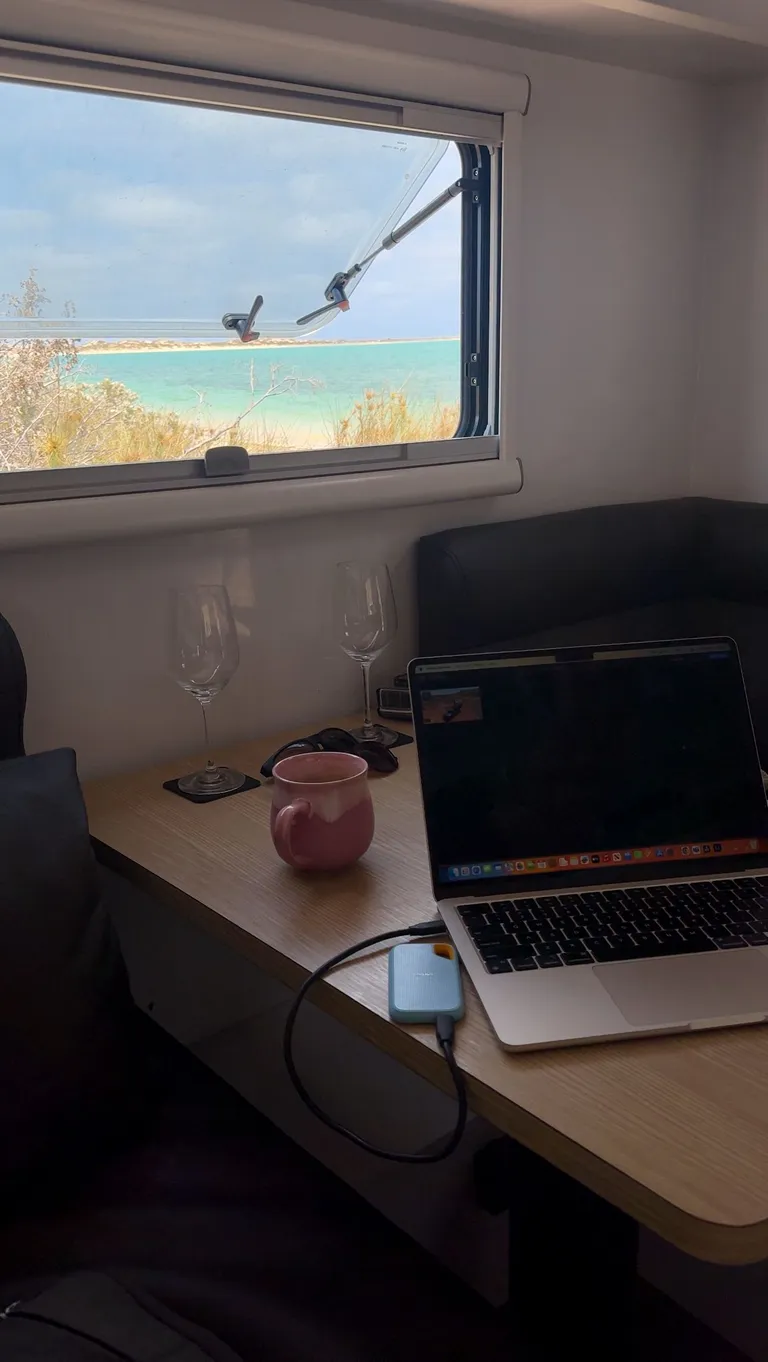
charging your laptop when working off-grid
3. Schedule work time in and create boundaries for yourself
t can be tempting to lean too far one way - either towards leisure or productivity - so make sure you’re maintaining a work-life balance on the road. You set out on this adventure to enjoy the great outdoors, so don’t lock yourself away in the van or rooftop tent and spend all day typing. On the flip side, if you’re working, you have a responsibility to get your tasks done, so don’t spend all your time at waterholes or on hikes and forget about your workload.
A good work-life balance is essential, and setting clear work hours can help you stay productive while still leaving plenty of time for adventure. Of course, you can take advantage of the flexibility this lifestyle offers by planning work-free days for those longer adventures, tinny missions, and explorations - just make sure you’ve scheduled your work tasks accordingly. A balance that works for me is starting work around 1pm. That way, my emails have built up over the morning, and I can log on and jump straight into actioning tasks.
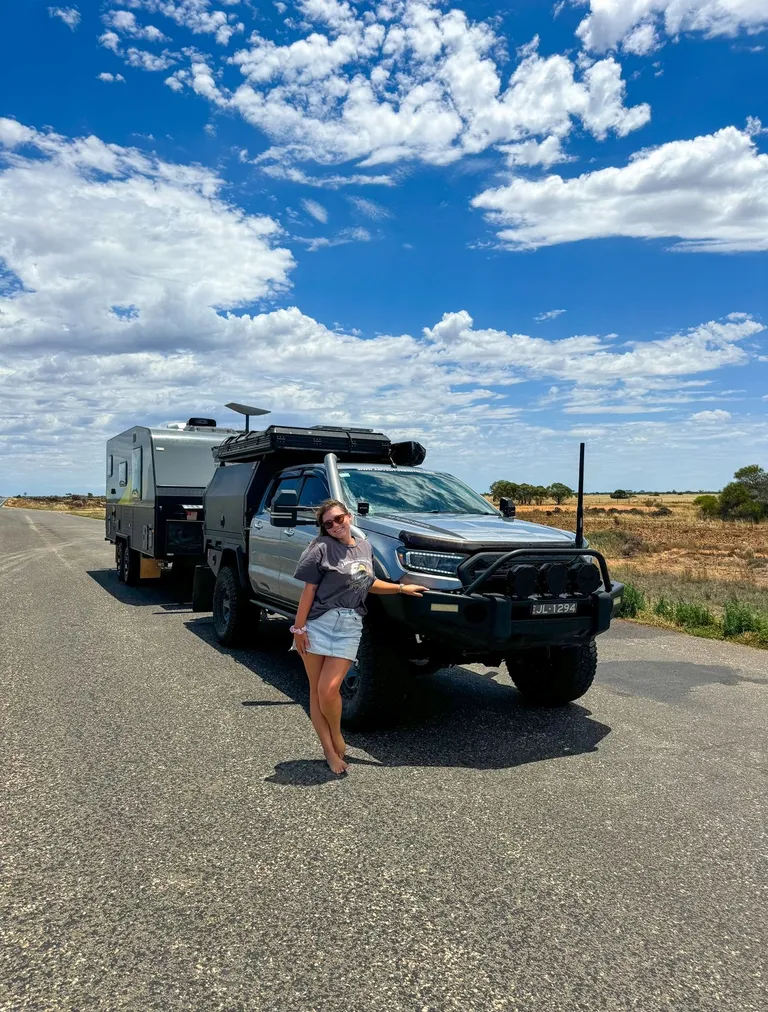
work life balance boundaries are important when travelling australia
4. Take advantage of apps
In an in-person team environment, things can feel much more organised compared to working solo. That’s where apps can help bridge the gap and streamline your workflow. My go-to for productivity is Trello; a great tool for task management and creating lists. I also love Slack for remote team communication, as it lets you chat with coworkers just like you would in an office.
One of the biggest things a workplace provides is social connection and friendship. Using an app like Slack helps you stay in touch with coworkers and continue collaborating, even when you're working solo.
If you’re a freelancer, you might also want to use an app to simplify invoicing; Bookipi is a great option. It makes creating invoices quick and easy, saving you time and effort. Plus, it keeps everything organised, which has personally been a lifesaver at tax time when I need to declare my income.
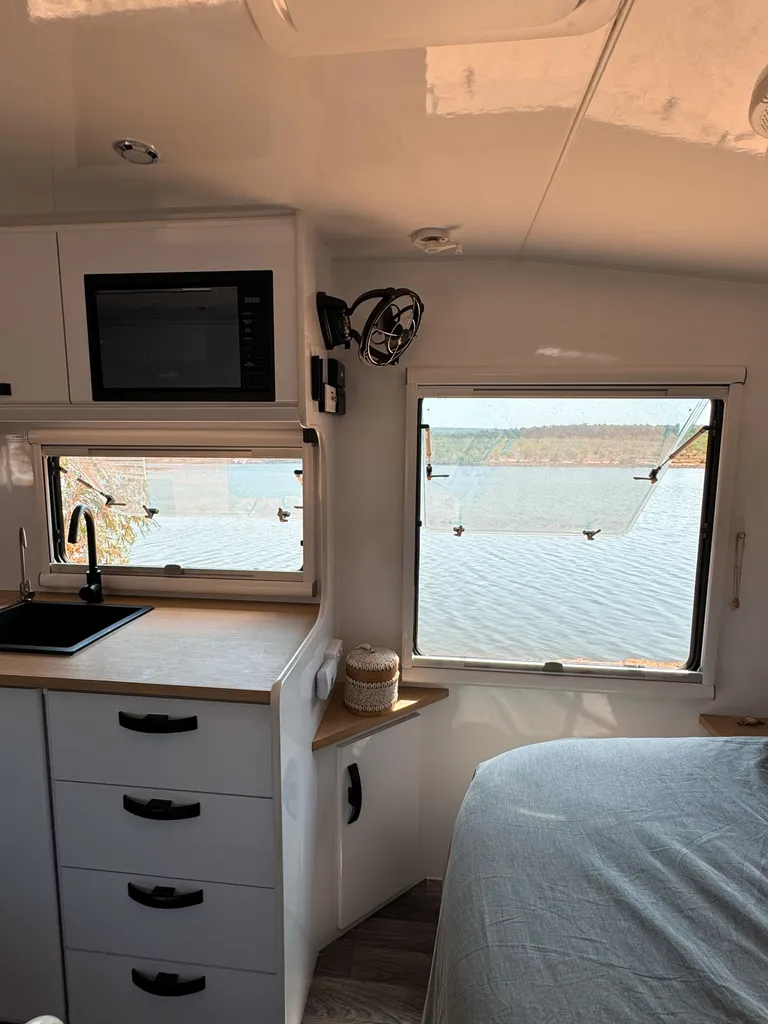
remote office view out caravan window australia
5. Find yourself a good accountant
Tax deductions work a little differently for remote workers compared to those with a home office, so it’s worth finding a good accountant who understands your lifestyle. They can help ensure you’re claiming the right deductions and staying compliant at tax time. I’d recommend consulting a professional to make sure you’re on the right track.
So, can you work remotely and travel Australia at the same time?
Balancing remote work with an adventurous lifestyle full of Australian travel is absolutely possible with the right tools, connectivity, and planning. Personally, I think it’s the ideal setup; I keep my mind engaged, have a steady income, and still get to travel and enjoy myself. With a bit of preparation and a few handy tricks up your sleeve, you can make it work too. Who says you can’t have your cake and eat it too?
Cover Anywhere
Explore in your caravan with confidence with insurance that goes anywhere you can legally go in Australia.
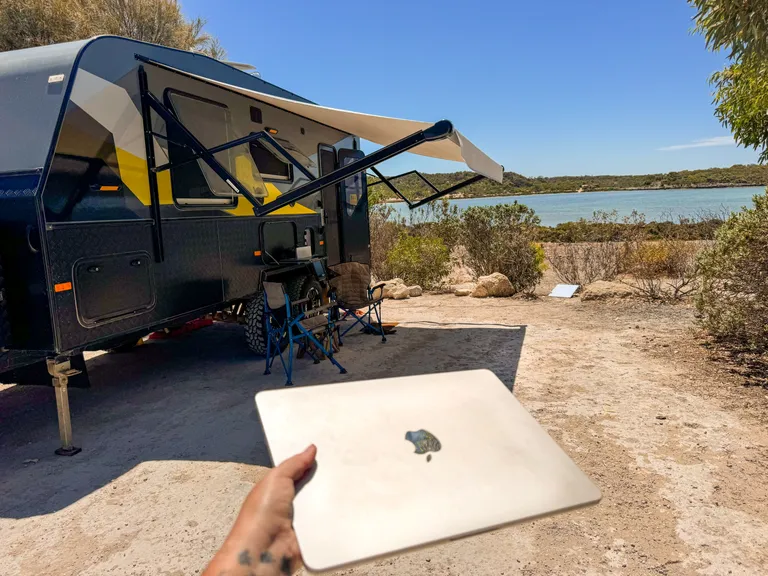
laptop remote worker with campsite view in caravan

